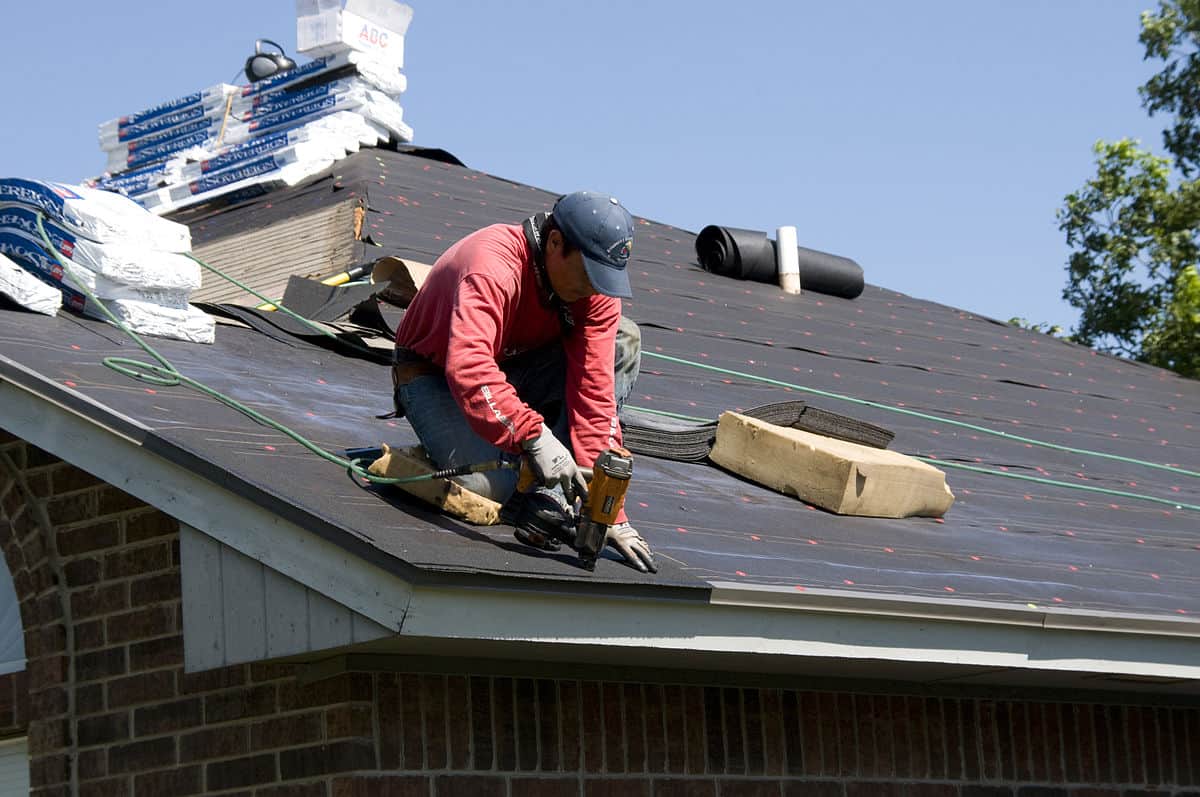Exactly How Gainesville Roofing Companies Can Change Your Home's Exterior
Wiki Article
Finest Practices for Ensuring Correct Roof Ventilation
Guaranteeing appropriate roofing ventilation is vital for the long life and effectiveness of a roofing system. A well balanced consumption and exhaust air vent ratio, generally 1:300, plays an essential role, with consumption vents ideally placed at the reduced edge of the roof covering for great air entrance and exhaust vents at the peak for warm air leave. Normal evaluations to recognize obstructions and maintain clear air movement are paramount. In addition, maintaining insulation away from vents is essential to stop airflow limitation. Recognizing these foundational components establishes the stage for more in-depth insights into installation and maintenance methods that can significantly enhance your roof system's efficiency.Understand Ventilation Basics
Appropriately recognizing air flow basics is necessary for guaranteeing the durability and performance of roof. Effective air flow mitigates wetness buildup and temperature level extremes in the attic room, both of which can bring about significant structural damage with time. A well-ventilated roofing aids in protecting against typical issues such as mold growth, wood rot, and ice dams, which can endanger the honesty of the roofing materials and the underlying frameworks.The main objective of ventilation is to help with the movement of air, enabling for a consistent exchange between the interior and outdoor atmospheres. This equilibrium is attained with a combination of intake and exhaust vents that collaborate to preserve ideal air flow. Intake vents, generally located along the eaves or soffits, enable fresh air to go into the attic room area, while exhaust vents, typically situated at or near the roofing ridge, enable hot, moist air to get away.
Trick aspects affecting the efficiency of roofing ventilation include appropriate placement, ample sizing, and making certain that both intake and exhaust vents are unblocked. Regular inspection and upkeep are critical to recognize prospective clogs, damage, or inefficiencies in the air flow system, thus protecting the roof covering's performance and toughness.
Types of Roof Vents
Roofing vents play an essential duty in keeping effective attic room ventilation and, by extension, the general wellness of the roof system. Numerous types of roofing system vents are offered, each with special advantages tailored to specific roof needs.
Soffit vents are installed under the eaves and operate in tandem with roofing system vents to make certain a balanced intake and exhaust system. By enabling cooler air to get in from below, soffit vents promote the expulsion of warm air through upper vents. Gable vents, located on the outside wall surfaces of the attic, offer one more reliable solution, specifically in homes with gable roofings.
Assess Your Present Air Flow

Following, consider the age and condition of your roofing products and ventilation parts. Older systems might not follow existing building ordinance or may have weakened with time, minimizing their efficiency. Conduct a comprehensive exam to determine over here any indications of damage, such as rust, damage, or voids that might jeopardize the system's performance.
Additionally, determine the attic room temperature level and moisture levels. High temperatures and humidity can suggest poor ventilation.
Setup Best Practices
Effective installation of roof covering ventilation systems is paramount for guaranteeing optimal efficiency and longevity. Appropriate setup begins with comprehending the details ventilation demands of the structure and the roofing it covers. This entails computing the appropriate proportion of consumption to wear down vents, generally sticking to the 1:300 rule, which stipulates one square foot of ventilation for every 300 square feet of attic room floor room.
Consumption vents need to be installed at the roofing's lower edge, commonly in the soffits, to permit awesome air to get in. Exhaust vents, on the other hand, must be mounted near or at the roofing's height to promote the exit of warm, wet air.
Seal all vent links meticulously to prevent air leakages and possible water infiltration. Usage high-quality materials and adhere to supplier standards to ensure longevity and effectiveness. Furthermore, integrating ridge vents with baffles can substantially boost air movement effectiveness by protecting against wind-driven rainfall and snow from getting in the attic.
Inevitably, precise installation of roof ventilation systems alleviates possible concerns such as mold development, ice dams, and architectural damages, making certain the roofing system's stability and the building's general health and wellness.
Regular Maintenance Tips
Uniformity in upkeep practices is essential to guaranteeing the long-term efficiency of roof ventilation systems. Throughout these evaluations, make certain that vents are free of debris, nests, and other blockages that might hinder airflow.
Use a soft brush or a vacuum cleaner to get rid of dust and debris from consumption anchor and exhaust vents. Be cautious not to harm the air vent screens or louvers during the process.
Appropriate insulation is similarly essential. Guarantee that attic room insulation does not obstruct the vents, as this can drastically limit airflow. If any insulation has moved or worked out, reposition or replace it to keep an efficient obstacle.
Last but not least, replace any type of harmed or missing parts without delay. Damaged vents, split roof shingles, or shabby flashing can all contribute to inadequate air flow and must be addressed without hold-up. Regular upkeep ensures that the roof air flow system functions ideally, thus extending the lifespan of the roof itself.
Final Thought
Guaranteeing correct roof air flow is vital for maintaining the effectiveness and durability of a roof. Adherence to the 1:300 consumption and exhaust vent proportion, combined with the critical positioning of vents, is necessary. Regular biannual examinations, particles cleansing, and making sure insulation does not obstruct airflow are essential methods. Carrying out these best practices will promote a well-ventilated roof, thus mitigating possible issues related to moisture buildup and excessive warm, inevitably extending the roof covering's life expectancy.A well balanced consumption and exhaust air vent ratio, generally 1:300, plays a critical role, with consumption vents ideally put at the lower side of the roof for trendy air entrance and exhaust vents at the height for cozy air exit. Consumption vents, generally located along the eaves or soffits, permit fresh air to enter the attic room, while exhaust vents, commonly positioned at or near you can try these out the roofing system ridge, allow warm, humid air to leave.
Soffit vents are installed under the eaves and work in tandem with roofing system vents to guarantee a balanced consumption and exhaust system. By allowing cooler air to get in from below, soffit vents promote the expulsion of hot air via upper vents. Adherence to the 1:300 intake and exhaust vent ratio, paired with the calculated positioning of vents, is necessary.
Report this wiki page